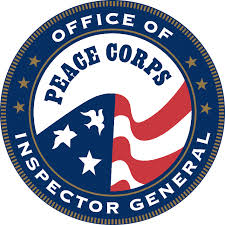More problems with the Five Year Rule
Thanks for the ‘heads up’ from Joanne Roll (Columbia 1963-65):
To: Sheila Crowley, Acting Director
From: Kathy Buller, Inspector General
Date: July 31, 2017
Subject: Management Implication Report – Challenges Associated with Staff Turnover
This document provides information concerning the negative impact of personnel turnover on agency operations, drawing on an analysis of interviews conducted by OIG evaluators from 2010 through 2015 in 27 country program evaluations (see Appendix A for a summary of these sources). In addition, we have included highlights from 34 audit and evaluation reports over the same period that referenced challenges related to position vacancies and staff turnover (see Appendix C)
Conclusion
The analysis presented in this Management Implication Report is intended to inform agency leadership that personnel turnover continues to present and exacerbate challenges for overseas staff, as reported to OIG in multiple country program evaluations and audits in recent years. OIG recognizes that the agency has taken some administrative steps to reduce the pace of unwanted personnel turnover, and that the agency has put forward legislation intended to address aspects of personnel turnover. Nevertheless, the perception of many staff we have interviewed is that turnover and related staffing gaps continue to have negative effects on their overseas programs, especially in terms of maintaining a high quality of Volunteer support, retaining sufficient institutional memory, and having functioning knowledge management practices to support effective operations. It is not surprising that OIG audit and evaluation reports have frequently included examples of operational challenges exacerbated by staff turnover and position vacancies. On March 28, 2017, the Congressional Research Service highlighted for the new administration the challenges of ongoing and persistent staff turnover at the Peace Corps.6 On April 12, 2017, 6 The Peace Corps: Current Issues. the Office of Management and Budget (OMB) issued a memorandum for heads of executive departments and agencies regarding a comprehensive plan for reforming the federal government and reducing the civilian workforce. Two objectives outlined in this memorandum were to: (1) align the federal workforce to meet the needs of today and the future rather than the requirements of the past, and (2) strengthen agencies by removing barriers that hinder front-line employees from delivering results. Given that the negative effects of staff turnover at the Peace Corps are well documented, in conjunction with the objectives outlined in the OMB memo, 7 it is an opportune time for Peace Corps leadership to incorporate these considerations in its response to OMB.
The whole report is here: https://s3.amazonaws.com/files.peacecorps.gov/documents/inspector-general/Management_Implication_Report_-_Challenges_Associated_with_Staff_Turnover.pdf

I think that the staff turnover problem at Peace Corps is symptomatic of a personnel system that is unique in all of the federal government, a rube goldberg concoction. The personnel system was created and augmented at different times by different administrations to serve different purposes. As a result, the personnel system is a hodge podge of federal civil service employees, Schedule C appointees in decision making positions, personal service contractors, HCN nationals and oh yes, Peace Corps Volunteers. Volunteers are not employees nor are they personal service contractors. However, they are the only ones doing the actual work. The politically appointed Director and Deputy Director serve, also at the pleasure of the President, but may serve during the entire presidential administration. Many resign earlier. The 7000 plus serving Volunteers justify the positions of over 3000 employees. The Five Year Rule does mandate that most employees, with all kinds of exceptions, may only work five years at the agency. Volunteers serve for 27 months and at the pleasure of the President.
The Five Year Rule was originally outlined by Dr. Robert Textor and designed to allow continually employment of recently RPCV to be employed in eventually 90% of the work force. Dr Textor envisioned that tenture would be for eight years, not five, and that RPCVs would be hired within ten years of their Volunteer service. This was make sure that their field experience was still relevant. The employment of RPCVs was never incorporated into the personnel system. The Five Year Rule, however, was. This unique tenure policy was never integrated into the entire system in a coordinated way. So staff comes and goes based on individual tenure and personal decisions, not based on what is best for the agency.
As far as I can tell, there has been no overall study of a personnel system which began with the question: What is the best way to implement the First Goal?